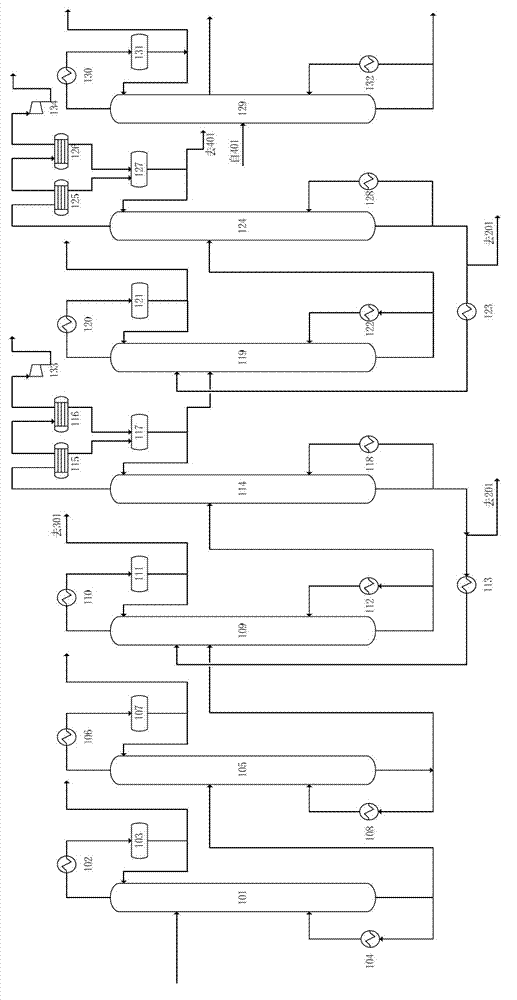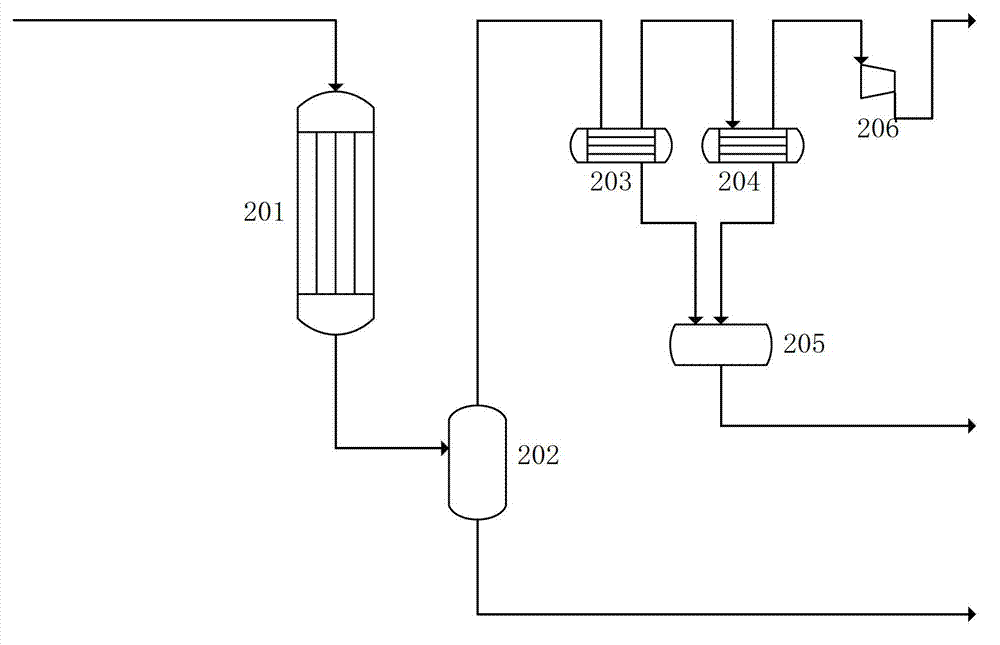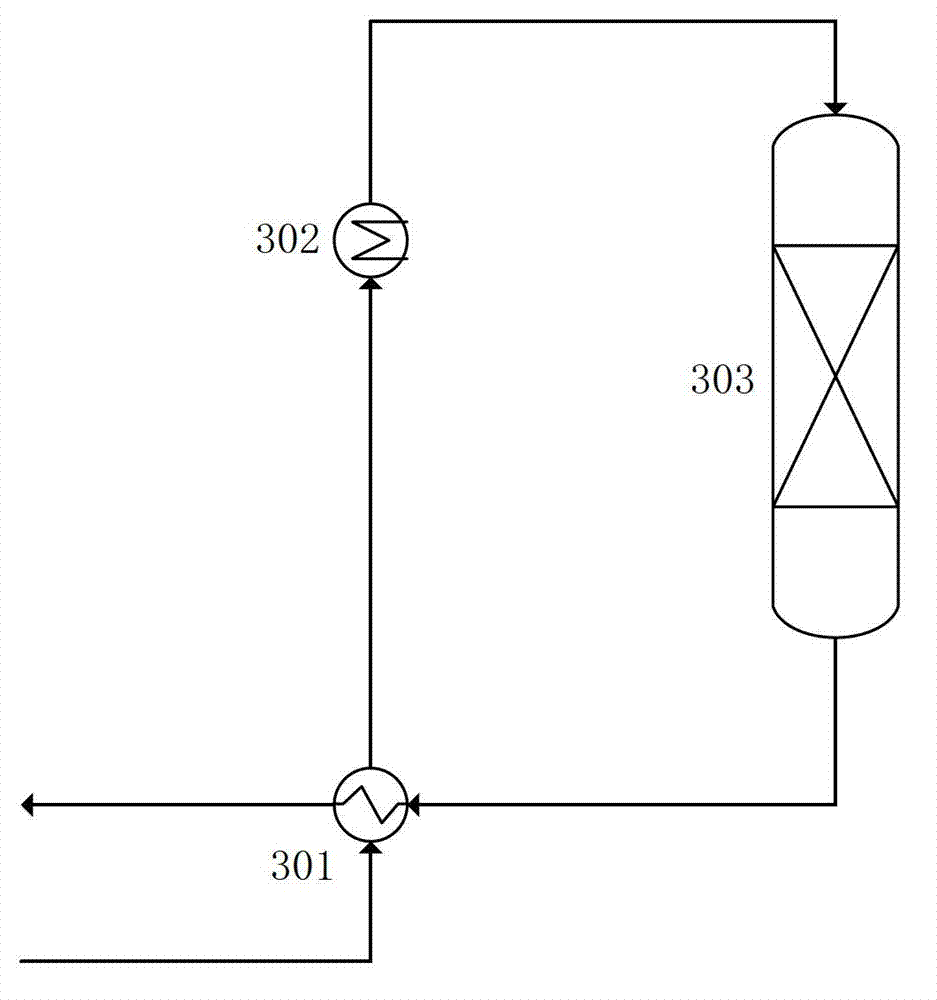Method and device for separating n-hexane, isohexane and benzene
A technology of n-hexane and isohexane, applied in the field of separation method and equipment combining ordinary rectification and extractive rectification, can solve the problems of high energy consumption, waste of benzene resources and the like
- Summary
- Abstract
- Description
- Claims
- Application Information
AI Technical Summary
Problems solved by technology
Method used
Image
Examples
Embodiment 1
[0037] Example 1: Example of Feedstock Containing Heavy Components
[0038] According to the method for the separation of normal hexane, isohexane and benzene of the present invention, mixed hydrocarbon raw materials such as raffinate, pyrolysis gasoline or straight-run gasoline from the aromatics extraction unit are first removed from 2-methylpentane with a lower boiling point. impurities, and then separate out the isohexane product. The remaining materials are separated by extractive distillation to obtain n-hexane products. The material after removal of n-hexane is subjected to subsequent separation to obtain the benzene product.
[0039] The process flow can be divided into the following units: light component removal unit, isohexane separation unit, n-hexane extraction and rectification unit, first solvent recovery unit, benzene extraction and rectification unit, second solvent recovery unit, benzene refining unit and solvent regeneration unit. The above units will be ...
Embodiment 2
[0053] Example 2: Example of feedstock free of heavy components
[0054] According to the method for the separation of normal hexane, isohexane and benzene of the present invention, mixed hydrocarbon raw materials such as raffinate, pyrolysis gasoline or straight-run gasoline from the aromatics extraction unit are first removed from 2-methylpentane with a lower boiling point. impurities, and then separate out the isohexane product. The remaining materials are separated by extractive distillation to obtain n-hexane products. The material after removal of n-hexane is subjected to subsequent separation to obtain the benzene product.
[0055] The process flow can be divided into the following units: light component removal unit, isohexane separation unit, n-hexane extraction and rectification unit, first solvent recovery unit, benzene extraction and rectification unit, second solvent recovery unit and solvent regeneration unit. Below, the above units will be described with refer...
PUM
 Login to View More
Login to View More Abstract
Description
Claims
Application Information
 Login to View More
Login to View More - R&D
- Intellectual Property
- Life Sciences
- Materials
- Tech Scout
- Unparalleled Data Quality
- Higher Quality Content
- 60% Fewer Hallucinations
Browse by: Latest US Patents, China's latest patents, Technical Efficacy Thesaurus, Application Domain, Technology Topic, Popular Technical Reports.
© 2025 PatSnap. All rights reserved.Legal|Privacy policy|Modern Slavery Act Transparency Statement|Sitemap|About US| Contact US: help@patsnap.com



